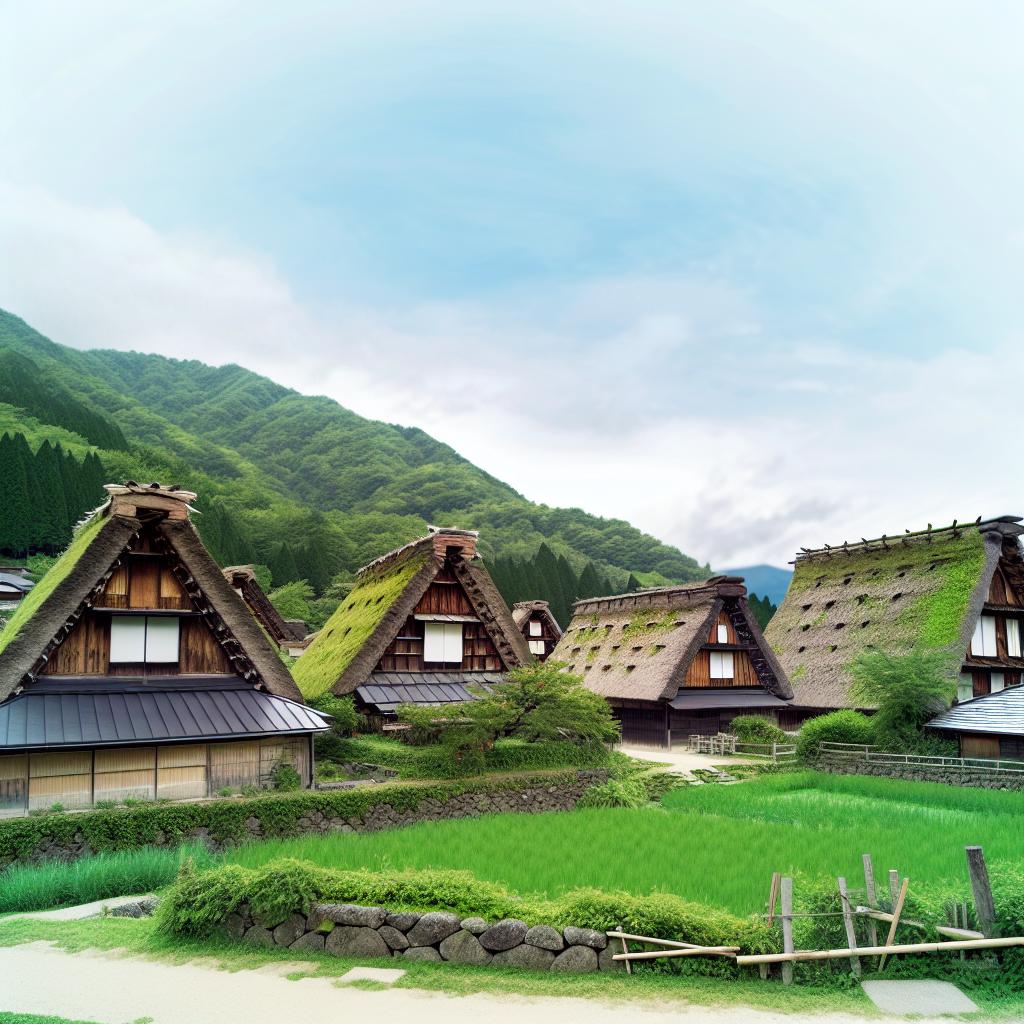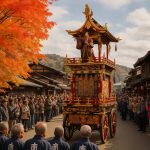Discovering the Unique Architecture of Shirakawa-go
The village of Shirakawa-go, situated in the picturesque mountainous region of Gifu Prefecture, Japan, is a jewel in the country’s rich tapestry of cultural heritage. It is particularly celebrated for its unique Gassho-style houses, which are traditional wooden structures that have fascinated both locals and tourists. These homes are not just architectural feats; they are relics that embody the historical and cultural evolution of Japan. Every year, countless visitors flock to this serene locale, eager to delve into the secrets of their history and marvel at the brilliant construction that has allowed them to withstand the test of time.
Understanding Gassho-style Architecture
The essence of Gassho-style architecture lies in its name. The word Gassho translates to hands in prayer, aptly capturing the design of the thatched rooftops with a distinct steep pitch, reminiscent of two hands pressed together in a prayerful gesture. Such a design is more than just an aesthetic choice; it is highly pragmatic. The steepness ensures that the heavy snowfalls typical of the region’s long winters can easily slide off, preventing roof collapse and maintaining the structural integrity of the houses.
One of the most intriguing aspects of these roofs is their construction method. They are built without the use of nails, an ingenious technique that speaks volumes about traditional Japanese carpentry skills. Instead, ropes are employed to securely bind the wooden beams, a method that exemplifies resourcefulness and expertise in traditional construction. For those who wish to explore more about Gassho-style architecture, the Shirakawa-go official website offers an insightful resource.
The History of Shirakawa-go
The history of Shirakawa-go is deeply rooted in its past as a prosperous agricultural community. These Gassho-style houses, with some dating back more than 250 years, were primarily erected by farmers. The need for ample space to cultivate silkworms played a pivotal role in their initial establishment. The upper floors of these multi-story houses were traditionally used for sericulture, a reflection of the vital role that silk production played in the local economy.
Life in Shirakawa-go mirrored the collective spirit of the community. Families and neighbors often operated as a cohesive unit, helping one another, especially with the formidable task of maintaining and rethatching the expansive roofs. Such a lifestyle reinforced social bonds and ensured that knowledge and skills were passed down through generations.
Visiting the Village
Tourists visiting Shirakawa-go are offered a unique opportunity to experience history firsthand. Several of the preserved houses remain open to the public, allowing one to step back in time and witness the traditional way of life still resonant within their wooden walls. Among these, the Wada House and Kanda House stand out as popular attractions. They operate as living museums, showcasing historical artifacts and providing a window into the remarkable lifestyle of the past.
Beyond the houses, the scenic beauty of Shirakawa-go is itself an attraction. The village is fringed by lush rice paddies that change with the seasons, each transformation bringing a distinct charm—be it the verdant greens of summer, the golden hues of autumn, or the pristine white blanket of snow in winter, the landscape never ceases to enchant.
Preservation Efforts and World Heritage Site
Shirakawa-go’s enduring appeal and significance were formally acknowledged in 1995 when it was recognized as a UNESCO World Heritage Site alongside Gokayama. The designation marked the beginning of increased efforts to preserve the historical and architectural integrity of the village. Various local organizations, backed by international support, are deeply invested in maintaining the authenticity of the region. These efforts ensure that Shirakawa-go can withstand threats from both inclement weather and the creeping challenges posed by modernization.
For academics, history enthusiasts, and those with a keen interest in architecture, a visit to Shirakawa-go offers more than just a visual feast. It provides an invaluable insight into Japan’s rural heritage, echoing the ingenuity and resilience of previous generations. The village stands as a testament to the harmony between human ingenuity and nature, inviting visitors to consider the cultural narratives embedded within the traditional architecture.
In conclusion, Shirakawa-go is not merely a cluster of historic houses but a living narrative of Japanese tradition and communal life. It’s a reminder of an era when craftsmanship and community were integral to survival. As you tread its pathways, gaze upon its rooftops, and explore the interiors of its storied homes, you’re invited into a dialogue across the ages, a silent conversation etched in wood and thatch—a conversation that continues to resonate with each passing visitor. Through ongoing preservation efforts, Shirakawa-go promises to remain an architectural and cultural beacon for future generations.













